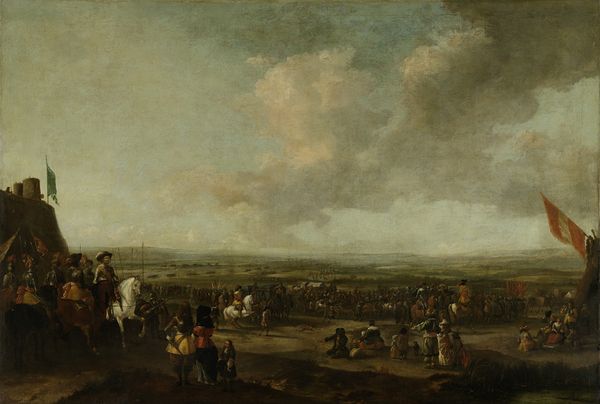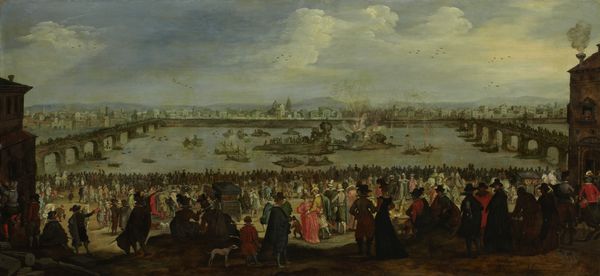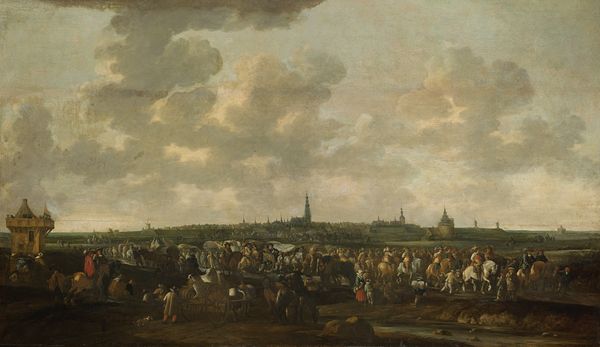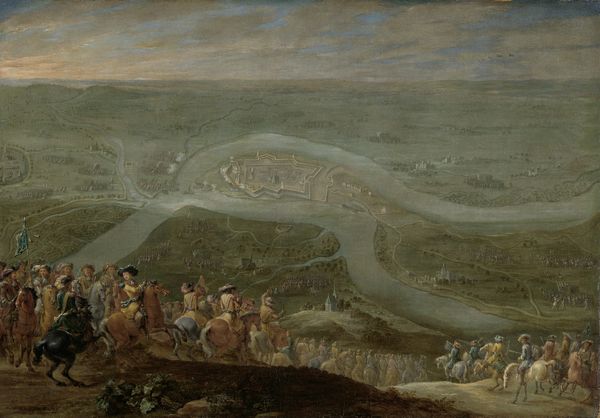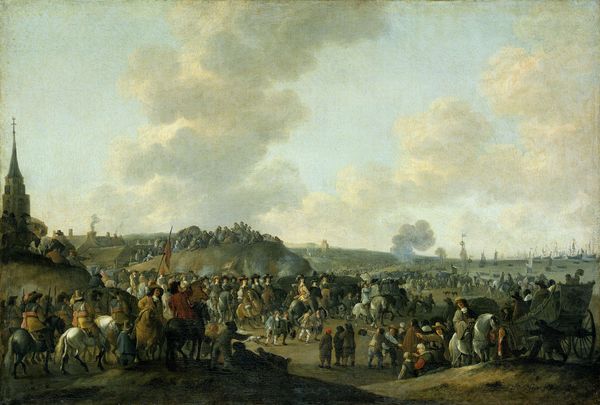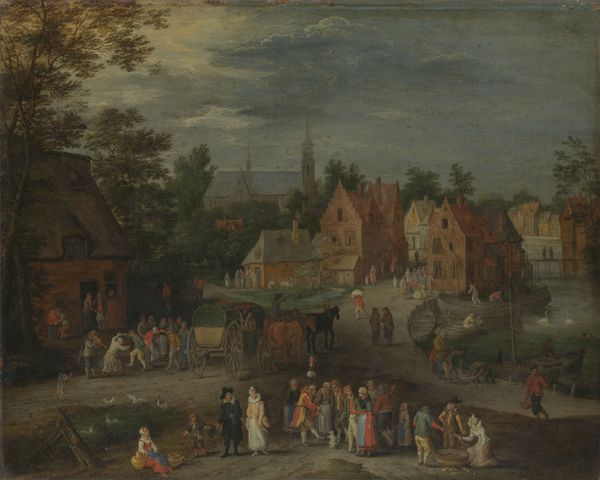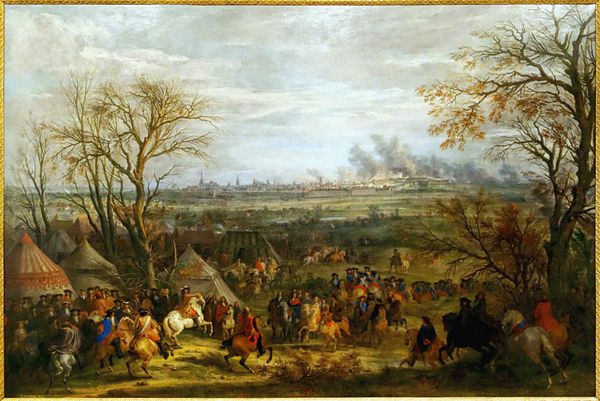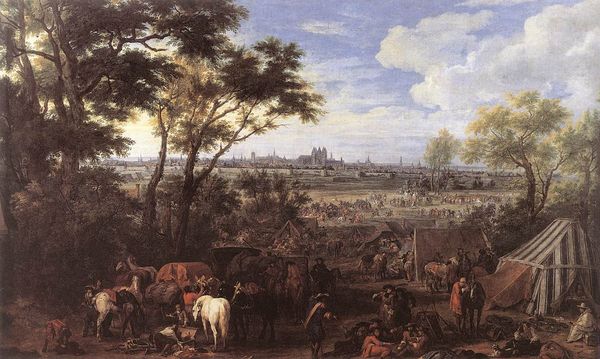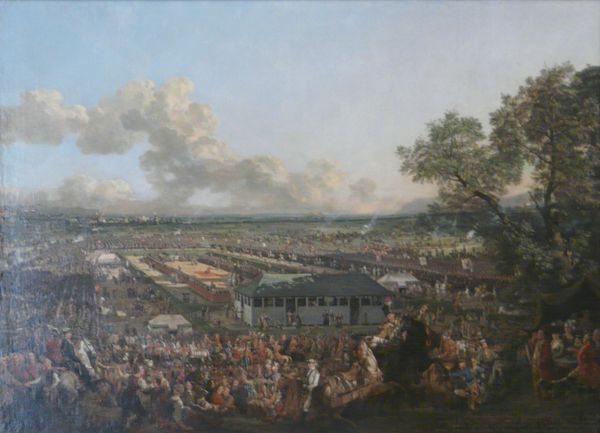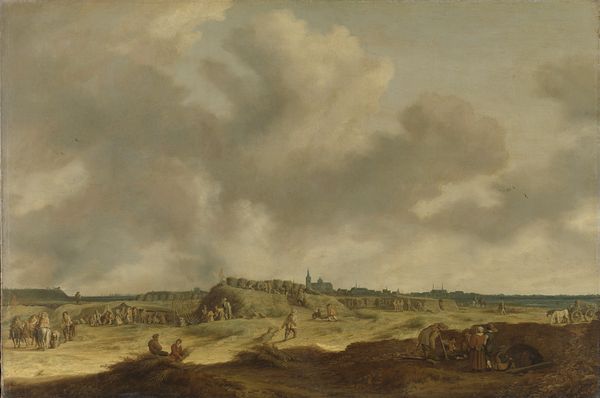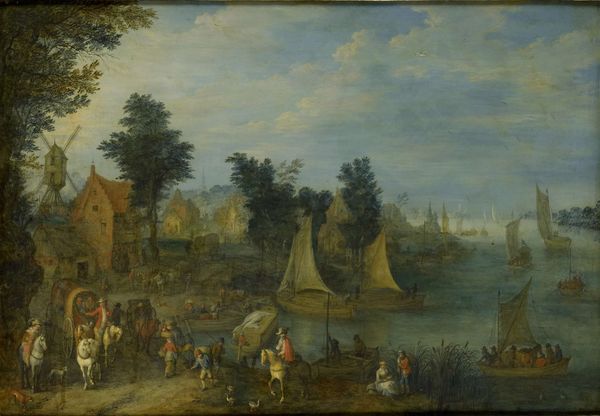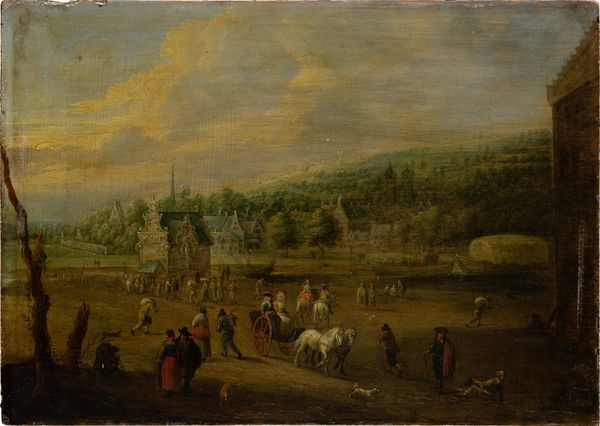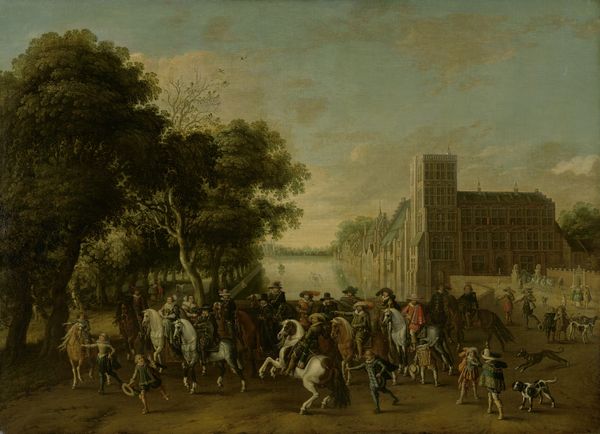
Prince Frederik Hendrik at the Siege of 's-Hertogenbosch, 1629 c. 1631
0:00
0:00
pauwelsvanhillegaert
Rijksmuseum
painting, oil-paint
#
baroque
#
dutch-golden-age
#
painting
#
oil-paint
#
landscape
#
figuration
#
oil painting
#
history-painting
Dimensions: support height 108 cm, support width 176.5 cm, sight size height 106 cm, sight size width 175.5 cm, frame height 130 cm, frame width 199 cm
Copyright: Rijks Museum: Open Domain
Curator: Here we have Pauwels van Hillegaert's oil on canvas, "Prince Frederik Hendrik at the Siege of 's-Hertogenbosch, 1629," created circa 1631 and now housed in the Rijksmuseum. Editor: My initial reaction is one of awe at the sheer scale of this operation, yet there’s also something rather mundane about it. It's a siege, a brutal affair, but also…daily life? Curator: Precisely. Hillegaert manages to capture the duality of war, the grand strategy but also the everyday realities. Let’s consider the materiality for a moment; oil paint allowed him to create these nuanced depictions of textures - from the rough canvas of tents to the sheen on the horses. Editor: And it speaks to how siege warfare was shaping the landscape and, of course, social structures of the Dutch Republic at that time. Notice how the horizon recedes, almost overwhelmed by the army's presence, that literally dominates the landscape! Curator: Indeed. It reflects a shift from viewing war solely as heroic battles, towards an acknowledgement of its industrial and logistical side. Think of the canvas itself - produced by skilled laborers. Or the pigments, traded goods from all corners of the world. This painting is just one of the products made for a wealthy elite and consumers during the Dutch Golden Age. Editor: I agree. The art market, fueled by a burgeoning merchant class, shaped the very subject matter artists chose. History paintings like this served to legitimize power. Prince Frederik Hendrik is strategically placed, leading with quiet authority. It emphasizes the heroic yet calculated control over events. Curator: You’re right; it isn't just a record, but a crafted image. A statement. This highlights a society finding its identity during a period of intense social and political change. Editor: Considering Hillegaert’s position within the artistic landscape of his time helps us understand the subtle layers of propaganda at play within the canvas. It’s a valuable piece that tells many intertwined stories. Curator: Ultimately, viewing art this way lets us uncover some hidden social systems of production and consumption and also allows a peek into a particular point in history. Editor: Agreed! It's been fascinating to peel back these layers within Hillegaert's depiction, moving beyond aesthetics into how they represented, and actually impacted, contemporary society.
Comments
No comments
Be the first to comment and join the conversation on the ultimate creative platform.
